
Amie Suthers
This project investigates the implicit memory recall of brand logos in children aged 6-11. Research over the past two decades have focussed on embedded advertising, particularly product placement and the effect this has on children’s understanding of marketing/buying habits however, this research uses mostly explicit memory tasks. New techniques in recent years have been developed to measure memory of advertisements which may not be consciously retrieved. Using the Fragmented Logo Implicit Recognition Task (a measure of implicit memory), we investigate further by comparing a singular central-placed logo to a cluster of several brand logos in a scene using film clips. In person testing was conducted within a primary school using an experimental, mixed methods design. An interview was also conducted to analyse beliefs and understandings of product placements. The expectation of this project is that older children will perform significantly better and have more of an understanding of product placement. Singular placed logos will also be a significantly better advertising technique for implicit memory compared to a cluster of logos. This study is important in order to fully understand the effect of advertising towards children and find the balance between effective marketing and children’s safeguarding.
Auty, S., & Lewis, C. (2004a). Exploring children’s choice: The reminder effect of product placement. Psychology and Marketing, 21, 697–713
Auty, S., & Lewis, C. (2004b). The ‘Delicious Paradox’: Preconscious processing of product placements by children. In L. Schrum (Ed.), Blurring the lines between entertainment and persuasion: The psychology of entertainment media. Mahwah, NJ: Lawrence Erlbaum.
Gupta, P. B., & Lord, K. R. (1998). Product placement in movies: The effect of prominence and mode on audience recall. Journal of Current Issues & Research in Advertising, 20(1), 47-59.
Keller, K. L. (1991a). Cue compatibility and framing in advertising. Journal of Marketing Research, 28(1), 42-57.
Keller, K. L. (1991b). Memory and evaluation effects in competitive advertising environments. Journal of Consumer Research, 17(4), 463-476
Owen, L., Hang, H., Lewis, C., & Auty, S. (2012). Children’s processing of embedded brand messages: Product placement and the role of conceptual fluency, The psychology of entertainment media, Routledge. 83-110.
Owen, L., Lewis, C., Auty, S., & Buijzen, M. (2013). Is children’s understanding of nontraditional advertising comparable to their understanding of television advertising? Journal of Public Policy & Marketing, 32(2), 195–206.
van Reijmersdal, E. A., Neijens, P. C., & Smit, E. G. (2007). Effects of television brand placement on brand image. Psychology & marketing, 24(5), 403-420.
Snodgrass, J. G., Smith, B., Feenan, K., & Corwin, J. (1987). Fragmenting pictures on the Apple Macintosh computer for experimental and clinical applications. Behavior Research Methods, Instruments, & Computers, 19(2), 270-274.
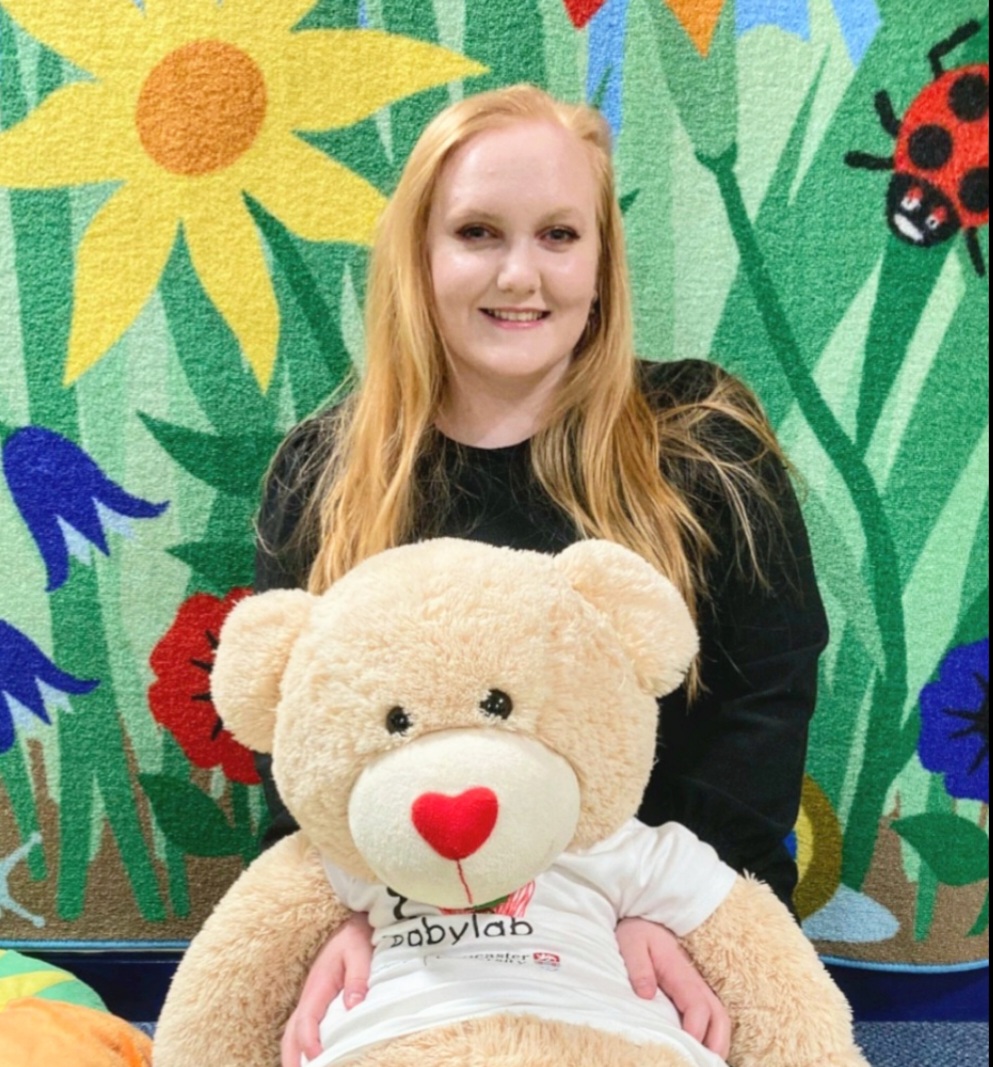
Amie Suthers
Introduction
What is Product Placement?
Advertising is a form of communication to an audience; it’s fundamental role is to promote a consumer product to the public audience with the intention for selling a good. However, especially in recent years, advertising seems to have developed further into influencing buying habits of individuals by embedding itself into different media forms. One such form of advertising is product placement. It is ‘the inclusion of a product, a brand name or the name of a firm in a movie or in a television programme for promotional purposes’. It is not an obvious form of advertising and has been described a more “non persuasive and non-aggressive way of promoting a brand”.
Before the 1920’s, product placement was limited; it was seen as violating the creative integrity of the artist's work (Tiutenkov, 2019). However, from the early 20th century, it slowly emerged as an effective advertising tool. The first Academy Award for Best Picture winning film Wings (1927) contained a product placement for Hersheys chocolate. From there, this advertising method has grown to a multibillion pound market. A poignant moment was the use of Reece's Pieces in Steven Spielberg's film "E.T." Sales for this candy grew 65% in three months (Galician, 2004) showing the effect that product placement could achieve.
Advertising in Children's Media
In 2009 (Nairn), it was estimated children in the UK have a purchasing power of £12 billion per year; this makes influencing their purchasing decisions very important for companies. We can assume this has significantly increased from then. Children in this generation now also have more access to technology than any other (Council on Communications and Media, 2011) and therefore are more at risk to be potentially exposed to sophisticated marketing tactics. This is an issue as it is widely accepted that younger children have less understanding of the meaning behind product placement in media or advertising. To protect them, the UK have fairly strict laws on product placement and what exactly can be advertised to children. However, as the majority of media consumed is made in America where legislation is seen as contesting their first Amendment rights, there is little to no oversight on what products are shown.
A study by Naderer, Matthes, and Spielvogel (2019) found that by content analysing children’s films over the past 25 years, 64.4% of all movies contained at least one brand placement.
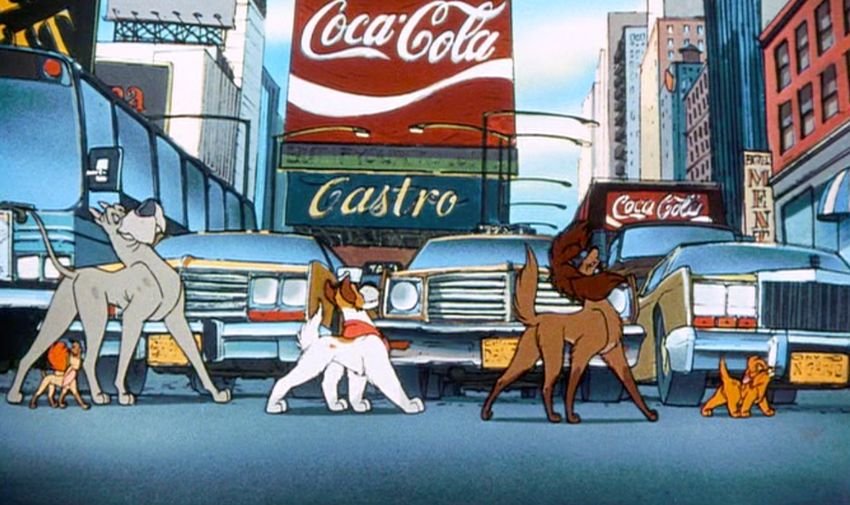
Source: Disney. A Still from the film "Oliver and Company" showing a paid product placement of Coca Cola in the background
This fantastic video on YouTube by Tom Scott has a great explanation on UK advertising laws and how product placement is made aware to the public with media created in the UK
This Study
This study was carried out to investigate the lasting memory effects of product placement in children's films, whilst also investigating effectiveness of different marketing strategies. Currently, there is barely any exploration of contextual influences on the impact of product placement on children; they are rarely exposed to product placement under laboratory conditions. Therefore, this can be seen as fairly novel research. We focus primarily on this study on whether a singular placed logo is a more effective product placement compared to when many logos are placed in a limited scene.
Most studies currently rely on explicit memory tasks, where participants have to actively remember or recall certain words or events (e.g. learning 10 words and saying them outloud after 10 seconds). This study relies on implicit memory. Implicit memory is the things you can't consciously recall, such as riding a bike or reading, they just come effortlessly once you've learned to do it. Children may remember seeing brand placement in a film without consciously realising it; therefore, it is important to explore different marketing strategies and how effective they are for memory.
Expected Outcomes
Single brand logos in adverts will have a significantly higher implicit memory score than clustered brand logos. (Keller, 1991)
There will be a significant difference in the implicit memory scores between boys and girls. (Owen, 2008; Owen, Lewis, and Auty, 2011)
Older children will score significantly better on implicit memory than younger children. (Owen, Lewis and Auty, 2011)
Given their lack of cognitive awareness, younger children will have a significantly less understanding of product placement in media compared to older children.(Owen, Lewis, Auty and Buijzen, 2011)
Methods
How Do We Measure Implicit Memory?
In order to measure implicit memory of logos, we used the Fragmented Logo Implicit Recognition Task (FLIRT technique). This technique created by Owen, Lewis and Auty (2012) is a measure of implicit memory with the specific purpose of assessing children’s implicit processing of product placement.
First the participant is shown a clip with a logo featured. The logo is not necessarily drawn attention to, but can be seen clearly in the frame. After viewing, participants are then shown a highly fragmented image of either the logo they just saw, or a completely different one. As you can see to the right, level one is the image with the least amount of pixels. If the participant recognised the logo at this level they would receive 1 point. At level five, they would receive 5 points, and the fully shown logo is 8 points.
Ease of recognition is what we are measuring, where a correct brand identification from a more lower level is indicative of greater implicit memory.
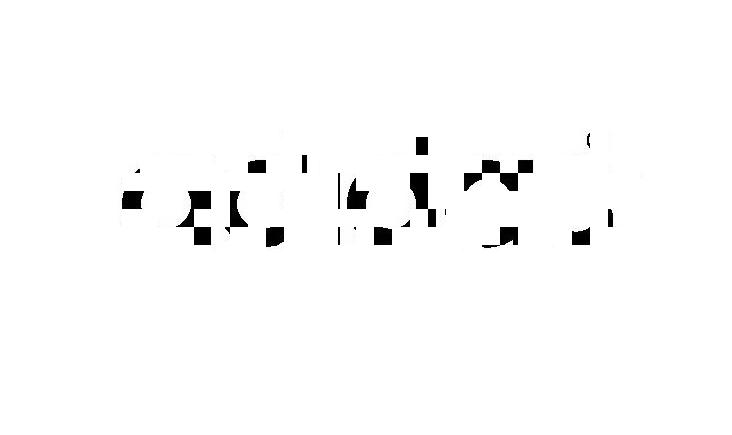
Level One, 1 point
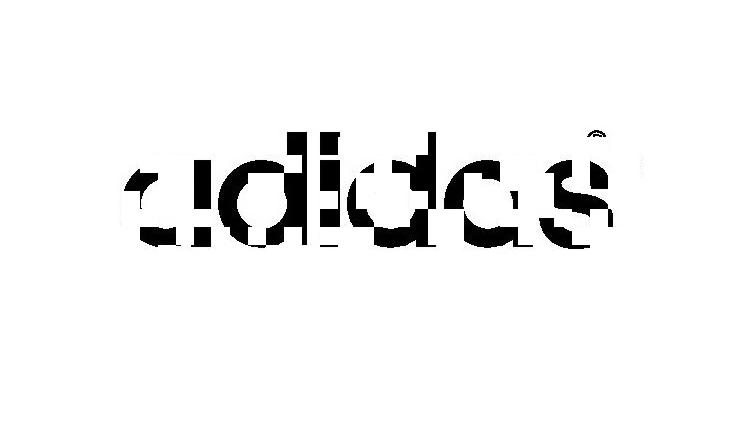
Level five, 5 points
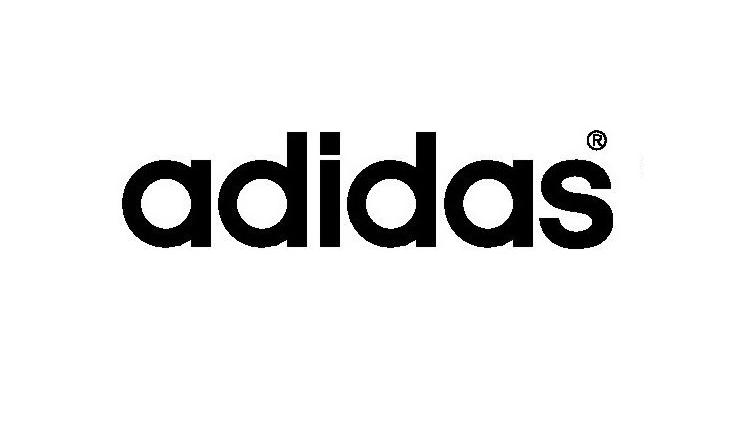
Level Eight, 8 points
This Gif demonstrates all levels of the Adidas FLIRT
Materials
We used ~two minute clips from "Mitchell's Vs The Machines" (left, Netflix) and "Ralph Breaks The Internet" (right, Disney). Mitchell's Vs the Machines contains a singular placed Sony logo in the clip, whereas Ralph Breaks the Internet features many logos within this timeframe. Examples being National Geographic, IMDB, Spotify, Ebay, Snapchat, etc.
Results
This graph compares the results for a singular placed logo to the clustered logos; we can see a significant difference. For the singularly placed logo, the average level recognised was 2.39 (SD = 1.24). For the clustered logos, the average was 3.03 (SD = 1.14).
In this graph we compared the results of male and female participants using logos used in the clips. The results we found were nearly identical, and therefore we can say there was no significant difference of gender. Males average level recognition was 2.80(SD = 1.05) and females was 2.88 (SD = 0.96).
This graphs shows a linear regression between age and the scores of the logos used in the clips. We found that age is a significant predictor of score; as participants got older, their logo recognition level decreased, and therefore recognised the logo quicker.
Interview Analysis
In the group interviews, we asked participants three questions; "Why do you think brand logos are put in films?", "Do you think brand logos should be in films?", and "Do you see brands and advertisements in your everyday life-where?".
After analysing all responses, we found that year three to four participants did not fully understand or answer the first two questions; their perspective was that product placement makes the films "more realistic" in a sense they can relate more to the content if it is something they have seen before. They did not answer any question in reference to any monetary or brand influencial reason of product placement.
Both year five and six groups mentioned in some aspect about brand exposure, and monetary gain from product placement. The idea that brands profit from advertising towards customers was fully understood by these age groups; one participant responded that product placement can “sell it (products) without words” which encapsulates this reason. These year groups also mentioned more realism of content and being able to relate more to characters.
This shows that it is older children above age nine who seem to be more aware of the more sophisticated reasons that product placement exists in children's media.
Conclusion
The ramifications of this study have two main aspects; the first is to education and legislation for children on marketing. From the results we can clearly see that younger children are more vulnerable to marketing manipulation tactics as they are unaware of the monetary gain or influence that product placement has on the media they consume. Therefore we can see that more education in this sector needs to be given to children of this age to make them aware of the dangers and reasons in order to protect them.
This study is not to say product placement is fundamentally a bad thing. It is an effective marketing tool, and has a significant effect on the economy, and influencing the publics opinion on specific brands. It also enables the audience to relate more to the content they view and develop stronger connections with the brand in a more natural way. Threfore our second outcome is that placing one singular logo in a short space of time compared to many, is a more effective marketing tool towards children. Therefore this study can also help benefit marketing agencies and brands for best practices, resulting in higher marketing efficacy.
What we can truly say from this study is that more research needs to be done in this area to fully explore the effect of product placement in children's media from both a marketing perspective, but also a safeguarding perspective.
Future Research Questions
- Mood - how does the mood of the media in which the logo is presented effect brand recognition?
- Gender differences - do certain conditions create a difference in brand logo recognition or is there no difference overall?
- To what extent does brand loyalty effect brand logo recognition?
- Can these results (i.e. singular placed logos are a more effective marketing tool) be applied to other forms ofmedia that children consume? E.g. interactive ads online, video games, etc.
- Can the results in this study be applied to adults?
Special Acknowledgements
I want to first thank Dr Charlie Lewis for his ideas and incredible discussions that led to the emergence of this project. I want to also thank Dr Marina Bazhydai and Didar Karadag for their invaluable support and guidance in my dissertation, and in developmental psychology as a whole.
References
Auty, S., & Lewis, C. (2004a). Exploring children’s choice: The reminder effect of product placement. Psychology and Marketing, 21, 697–713
Auty, S., & Lewis, C. (2004). The ‘Delicious Paradox’: Preconscious processing of product placements by children. In L. Schrum (Ed.), Blurring the lines between entertainment and persuasion: The psychology of entertainment media. Mahwah, NJ: Lawrence Erlbaum
Burton, L. A., Rabin, L., Vardy, S. B., Frohlich, J., Wyatt, G., Dimitri, D., & Guterman, E. (2004). Gender differences in implicit and explicit memory for affective passages. Brain and Cognition, 54(3), 218-224
on Communications, C., & Strasburger, V. C. (2011). Children, adolescents, obesity, and the media. Pediatrics, 128(1), 201-208.
Digitas Perspective, “The Next Generation of Consumers,” Oct. 2012
Galician, M. L., & Bourdeau, P. G. (2004). The evolution of product placements in Hollywood cinema: Embedding high-involvement “heroic” brand images. Journal of Promotion Management, 10(1-2), 15-36.
Keller, K. L. (1991). Memory and evaluation effects in competitive advertising environments. Journal of Consumer Research, 17(4), 463-476
Naderer, B., Matthes, J., & Spielvogel, I. (2019). How brands appear in children's movies. A systematic content analysis of the past 25 Years. International Journal of Advertising, 38(2), 237-257.
Nairn, A., & Fine, C. (2008). Who’s messing with my mind? The implications of dual-process models for the ethics of advertising to children. International Journal of Advertising, 27(3), 447-470
Owen, L., Hang, H., Lewis, C., & Auty, S. (2012). Children’s processing of embedded brand messages: Product placement and the role of conceptual fluency. In The psychology of entertainment media. Routledge, 83-110
Owen, L., Lewis, C., Auty, S., & Buijzen, M. (2013). Is children’s understanding of nontraditional advertising comparable to their understanding of television advertising? Journal of Public Policy & Marketing, 32(2), 195–206
van Reijmersdal, E. A., Neijens, P. C., & Smit, E. G. (2007). Effects of television brand placement on brand image. Psychology & marketing, 24(5), 403-420
Tiutenkov, E. (2019). Is Product Placement in Movies Aimed at Children and Teenagers? (Doctoral dissertation, Empire State College).
Slide 1 image (max 2mb)
Slide 1 video (YouTube/Vimeo embed code)
Image 1 Caption
Slide 2 image (max 2mb)
Slide 2 video (YouTube/Vimeo embed code)
Image 2 Caption
Slide 3 image (max 2mb)
Slide 3 video (YouTube/Vimeo embed code)
Image 3 Caption
Slide 4 image (max 2mb)
Slide 4 video (YouTube/Vimeo embed code)
Image 4 Caption
Slide 5 image (max 2mb)
Slide 5 video (YouTube/Vimeo embed code)
Image 5 Caption
Slide 6 image (max 2mb)
Slide 6 video (YouTube/Vimeo embed code)
Image 6 Caption
Slide 7 image (max 2mb)
Slide 7 video (YouTube/Vimeo embed code)
Image 7 Caption
Slide 8 image (max 2mb)
Slide 8 video (YouTube/Vimeo embed code)
Image 8 Caption
Slide 9 image (max 2mb)
Slide 9 video (YouTube/Vimeo embed code)
Image 9 Caption
Slide 10 image (max 2mb)
Slide 20 video (YouTube/Vimeo embed code)
Image 10 Caption
Caption font
Text
Image (max size: 2mb)
Or drag a symbol into the upload area
















Image description/alt-tag
Image caption
Image link
Rollover Image (max size: 2mb)
Or drag a symbol into the upload area
















Border colour
Rotate
Skew (x-axis)
Skew (y-axis)
Image (max size: 2mb)
Or drag a symbol into the upload area
















Image description/alt-tag
Image caption
Image link
Rollover Image (max size: 2mb)
Or drag a symbol into the upload area
















Border colour
Rotate
Skew (x-axis)
Skew (y-axis)
Image (max size: 2mb)
Or drag a symbol into the upload area
















Image description/alt-tag
Image caption
Image link
Rollover Image (max size: 2mb)
Or drag a symbol into the upload area
















Border colour
Rotate
Skew (x-axis)
Skew (y-axis)
Image (max size: 2mb)
Or drag a symbol into the upload area
















Image description/alt-tag
Image caption
Image link
Rollover Image (max size: 2mb)
Or drag a symbol into the upload area
















Border colour
Rotate
Skew (x-axis)
Skew (y-axis)
Image (max size: 2mb)
Or drag a symbol into the upload area
















Image description/alt-tag
Image caption
Image link
Rollover Image (max size: 2mb)
Or drag a symbol into the upload area
















Border colour
Rotate
Skew (x-axis)
Skew (y-axis)
Image (max size: 2mb)
Or drag a symbol into the upload area
















Image description/alt-tag
Image caption
Image link
Rollover Image (max size: 2mb)
Or drag a symbol into the upload area
















Border colour
Rotate
Skew (x-axis)
Skew (y-axis)
Image (max size: 2mb)
Or drag a symbol into the upload area
















Image description/alt-tag
Image caption
Image link
Rollover Image (max size: 2mb)
Or drag a symbol into the upload area
















Border colour
Rotate
Skew (x-axis)
Skew (y-axis)
Image (max size: 2mb)
Or drag a symbol into the upload area
















Image description/alt-tag
Image caption
Image link
Rollover Image (max size: 2mb)
Or drag a symbol into the upload area
















Border colour
Rotate
Skew (x-axis)
Skew (y-axis)
Image (max size: 2mb)
Or drag a symbol into the upload area
















Image description/alt-tag
Image caption
Image link
Rollover Image (max size: 2mb)
Or drag a symbol into the upload area
















Border colour
Rotate
Skew (x-axis)
Skew (y-axis)
Image (max size: 2mb)
Or drag a symbol into the upload area
















Image description/alt-tag
Image caption
Image link
Rollover Image (max size: 2mb)
Or drag a symbol into the upload area
















Border colour
Rotate
Skew (x-axis)
Skew (y-axis)
Image (max size: 2mb)
Or drag a symbol into the upload area
















Image description/alt-tag
Image caption
Image link
Rollover Image (max size: 2mb)
Or drag a symbol into the upload area
















Border colour
Rotate
Skew (x-axis)
Skew (y-axis)
Image (max size: 2mb)
Or drag a symbol into the upload area
















Image description/alt-tag
Image caption
Image link
Rollover Image (max size: 2mb)
Or drag a symbol into the upload area
















Border colour
Rotate
Skew (x-axis)
Skew (y-axis)
Image (max size: 2mb)
Or drag a symbol into the upload area
















Image description/alt-tag
Image caption
Image link
Rollover Image (max size: 2mb)
Or drag a symbol into the upload area
















Border colour
Rotate
Skew (x-axis)
Skew (y-axis)
Image (max size: 2mb)
Or drag a symbol into the upload area
















Image description/alt-tag
Image caption
Image link
Rollover Image (max size: 2mb)
Or drag a symbol into the upload area
















Border colour
Rotate
Skew (x-axis)
Skew (y-axis)
Image (max size: 2mb)
Or drag a symbol into the upload area
















Image description/alt-tag
Image caption
Image link
Rollover Image (max size: 2mb)
Or drag a symbol into the upload area
















Border colour
Rotate
Skew (x-axis)
Skew (y-axis)
Image (max size: 2mb)
Or drag a symbol into the upload area
















Image description/alt-tag
Image caption
Image link
Rollover Image (max size: 2mb)
Or drag a symbol into the upload area
















Border colour
Rotate
Skew (x-axis)
Skew (y-axis)
Image (max size: 2mb)
Or drag a symbol into the upload area
















Image description/alt-tag
Image caption
Image link
Rollover Image (max size: 2mb)
Or drag a symbol into the upload area
















Border colour
Rotate
Skew (x-axis)
Skew (y-axis)
Image (max size: 2mb)
Or drag a symbol into the upload area
















Image description/alt-tag
Image caption
Image link
Rollover Image (max size: 2mb)
Or drag a symbol into the upload area
















Border colour
Rotate
Skew (x-axis)
Skew (y-axis)



